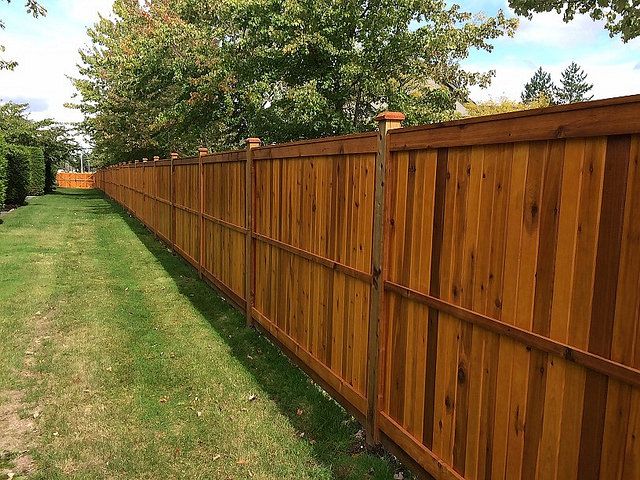Exactly How to Pick the Right Fencing Spot for Your Home
When it comes to enhancing the look and sturdiness of your property's fence, choosing the best discolor is an essential decision that needs cautious factor to consider. With a myriad of choices available out there, each catering to different wood types, shades, and transparency levels, the procedure can swiftly come to be overwhelming. Making an enlightened selection can considerably impact the general visual appeals and durability of your fencing. Just how can you ensure that you select the excellent fencing stain that lines up with your residential property's design and upkeep requirements? Allow's explore some crucial factors to direct you in this decision-making procedure.
Comprehending Wood Kind
To choose the proper fencing discolor, it is vital to have an extensive understanding of the numerous kinds of wood typically made use of for secure fencing. The option of wood plays a critical duty in establishing the long life and general aesthetic appeals of the fence. Cedar is a prominent choice due to its all-natural resistance to degeneration and insects, making it a sturdy alternative for outside structures. Pine is another typical wood used in secure fencing, understood for its cost and simplicity of staining. Yearn is more vulnerable to bending and decomposing compared to cedar. Redwood is a high-end alternative recognized for its striking appearance and natural durability, though it comes with a greater cost. When choosing a fencing stain, it is very important to take into consideration the kind of wood being made use of to ensure compatibility and optimal security. Understanding the features of various timber types will help you make an informed choice when it involves selecting the best fencing stain for your building - Fence Staining Nashville TN.
Picking the Right Shade
Choosing an appropriate shade for your fence discolor is a vital choice that dramatically impacts the total visual appeal of your building. The color you choose must enhance the design of your home, blend sympathetically with the surroundings, and mirror your personal taste. When selecting a color, take into consideration the existing color palette of your residential or commercial property. For a natural look, earthy tones like browns, greens, or grays work well. These colors can assist the fencing blend into the landscape and develop a cohesive look. If you favor a more contemporary or vibrant look, consider choosing darker tones like black or deep charcoal for a striking comparison. Lighter shades such as whites or light grays can make a fencing appear larger and include a touch of sophistication to your residential or commercial property. Ultimately, the best color option will certainly boost the charm of your fence and boost the general visual appeal of your home.

Thinking About Transparency Degrees
When choosing the best shade for your fence stain, one more essential facet to take into consideration is the degree of openness that will certainly best suit your property's visual and upkeep demands. Openness degrees in fence discolorations generally fall into 3 categories: clear, semi-transparent, and strong. Think about the level of exposure your fencing deals with, the wanted upkeep frequency, and the aesthetic you wish to accomplish when selecting the right openness degree for your fencing tarnish.
Assessing Upkeep Demands
Considering the long life and maintenance of your fencing, reviewing the maintenance demands is vital in establishing one of the most appropriate fence tarnish for your home. The degree of maintenance needed for your fencing can vary depending upon aspects such as the sort of wood, weather in your area, and your why not try these out personal choices.
When evaluating maintenance demands, it is crucial to consider the resilience of the fencing stain. Some spots require even more regular reapplication than others, so selecting a discolor with a much longer life expectancy can help in reducing the total upkeep demands of your fencing (Fence Staining). Furthermore, factors such as resistance to UV rays, water, and mildew can impact just how often you require to re-stain your fencing

Checking Samples Before Application
Before using any fencing tarnish, it is advisable to conduct example tests to make sure compatibility with the timber and desired aesthetic outcome. Testing samples allows you to assess exactly how the tarnish will certainly interact with the specific type of timber utilized in your fence, as different timbers can take in stains differently. To begin, choose a tiny low-profile location of the fencing to apply the discolor samples.
Conclusion
Finally, picking the proper fence discolor for your building involves recognizing the timber type, selecting the appropriate shade, thinking about openness degrees, examining maintenance needs, and screening examples before application (Fence Staining Service). By taking these aspects into consideration, you can ensure that your fence tarnish matches your residential property while giving the necessary security and longevity. Make a notified choice to improve the appearance and longevity of your fencing